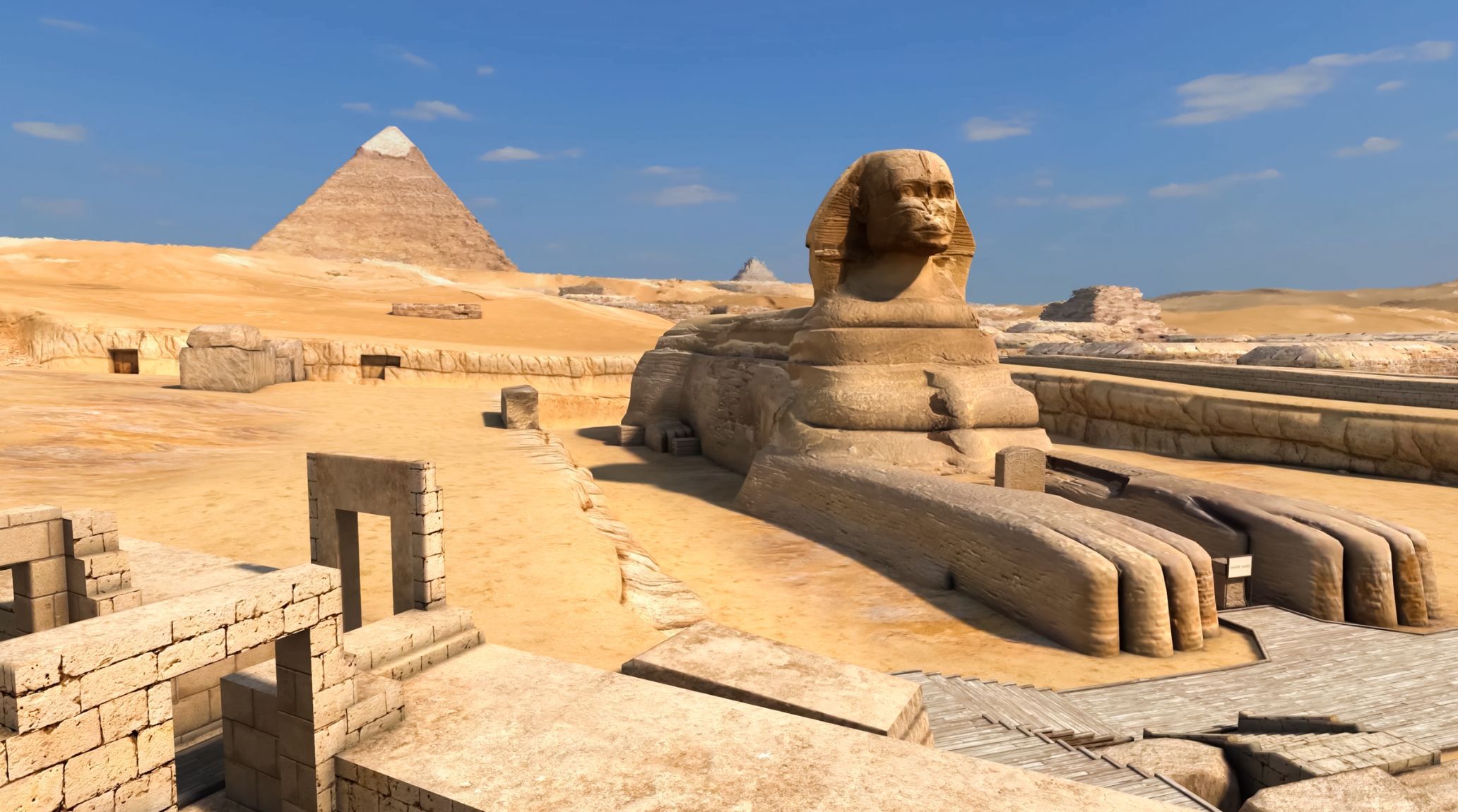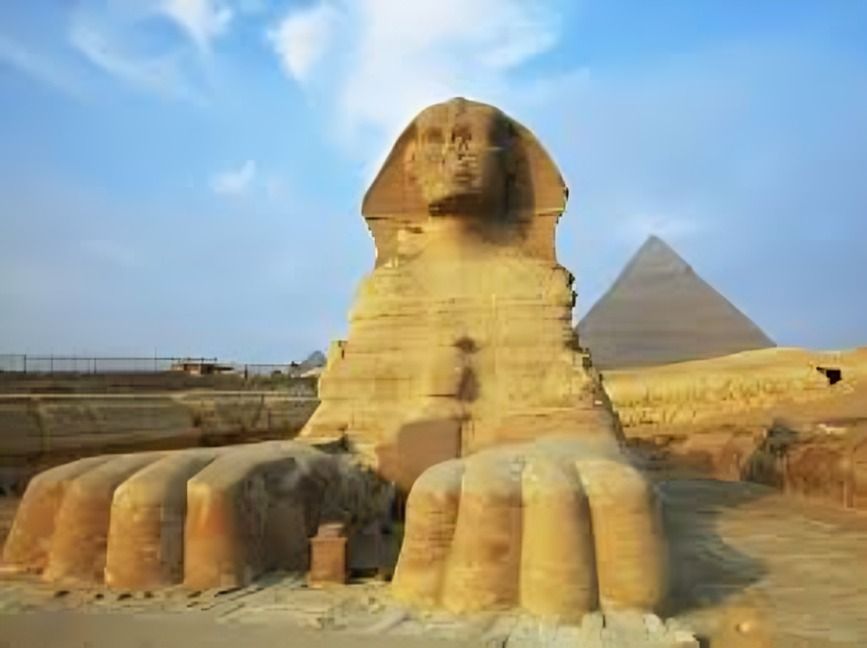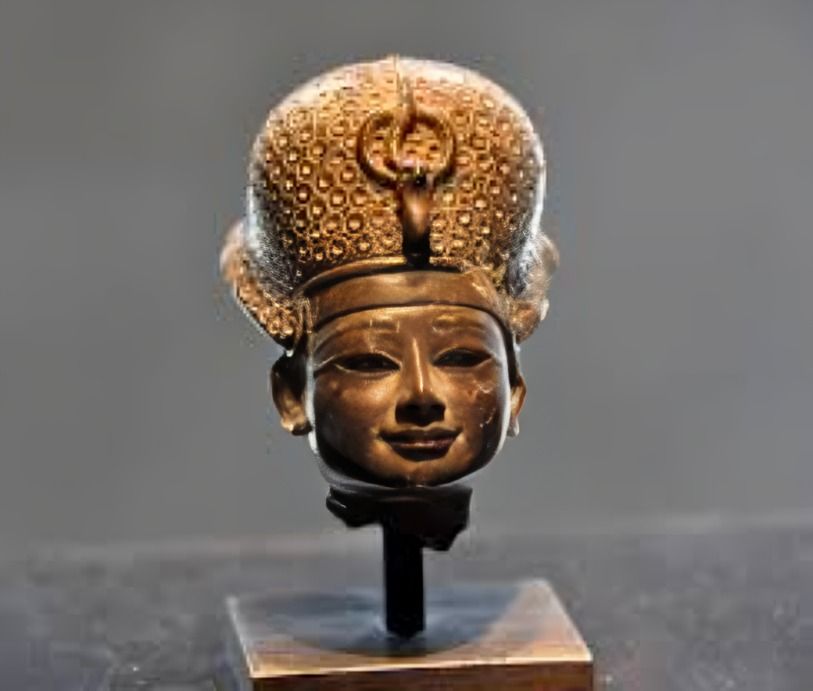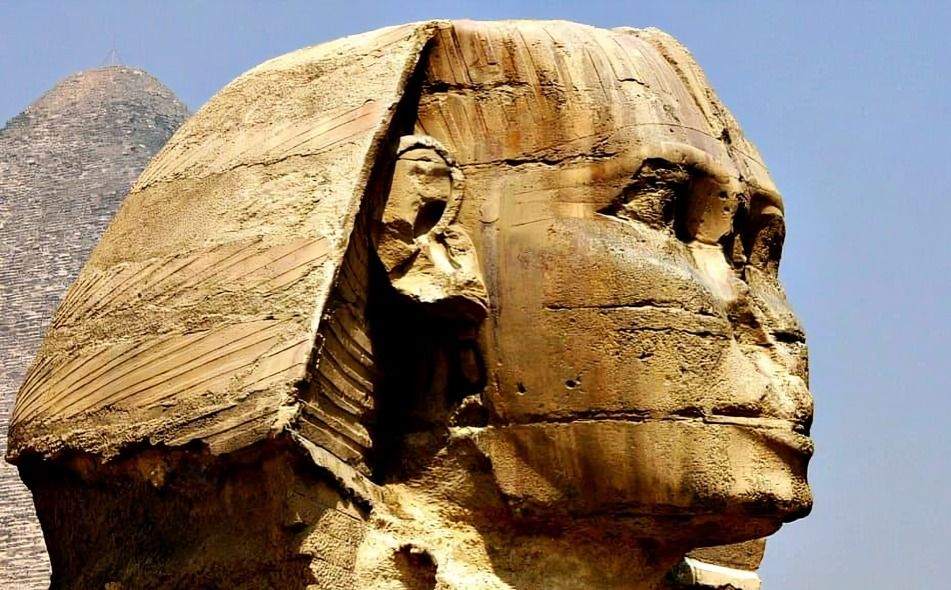
“
The Great Sphinx of Giza stands as one of the most iconic and mysterious structures of ancient Egypt. In this article, we will delve into 20 Fascinating facts about The Great Sphinx, unraveling some of its most enigmatic aspects and shedding light on the mysteries that surround this timeless marvel.1
1
”
The Great Sphinx of Egypt, officially known as the Great Sphinx of Giza, is a renowned statue located southwest of modern Cairo. It sits on the Giza Plateau, which is on the west side of the Nile River. 1

The Great Sphinx is a colossal structure, measuring 240 feet in length, 66 feet in height, and 62 feet in width. Archaeologists estimate it was built during Pharaoh Khafre's reign, around 2520-2494 BCE.
The Great Sphinx is modeled after the mythological Egyptian creature of the same name. It combines the body of a lion with the head of a human. This representation reflects its significance in Egyptian mythology. 2
The Great Sphinx wasn’t always its current tan color; it was once painted in vibrant primary colors. The face was likely russet red, and the headdress was probably canary yellow. Residual red paint can still be seen on one of the Sphinx’s ears. 3
The Great Sphinx is the largest monolithic statue in the world. Its immense size makes it a unique marvel of ancient engineering. This colossal structure stands out for its grandeur and scale. 4
The Great Sphinx is the world's oldest monumental sculpture. Its creation dates back to around 2520-2494 BCE. This makes it a remarkable relic of ancient Egyptian art and history. 5

Thutmose IV is said to have rediscovered the Great Sphinx after falling asleep beside it. According to legend, he had a dream where the Sphinx spoke to him. This event supposedly led to the restoration of the monument.
The Great Sphinx took approximately three years to complete. Its construction involved extensive carving and sculpting. This duration reflects the monumental effort and skill involved in its creation. 6
Despite its massive size, the Great Sphinx was carved from a single block of limestone left over from the pyramid quarry. Its front paws, however, were constructed from separate limestone blocks. 7
The Great Sphinx has intrigued historians and archaeologists for centuries. The most accepted theory suggests it was built during Khafre's reign, as the lion's head resembles his likeness. This places the statue's creation around 2500 BCE. 8
The Great Sphinx originally had a prominent beard, but most of it has eroded over time. A remnant of this beard is preserved at the British Museum and the Museum of Egyptian Antiquities in Cairo. 9
Egyptologist Mark Lehner estimates that around 100 workers took about three years to complete the Great Sphinx using chisels and hammers. Discoveries of abandoned toolkits and unprocessed stone blocks suggest the monument was intended to be larger. 10

One of the Great Sphinx’s most notable features is its missing nose, which would have been about one meter long. Contrary to the myth that Napoleon’s troops shot it off in 1798, 18th-century drawings reveal it was already absent long before.
One of the most unusual features of the Great Sphinx is its disproportionate head. Research suggests it may have been recarved by different pharaohs over time to align with changing aesthetics. 11
The Great Sphinx has significantly deteriorated over time, with severe erosion affecting its body and face, including the loss of its nose. Some theory proposes that the nose was removed by Muhammad Saʾim al-Dahr, a 14th-century Sufi Muslim. 12
Leftover meals, including cattle, sheep, and goat meat, were discovered at the worksite. This suggests that the workers left in haste, possibly due to an abrupt event. 13
Numerous myths and legends surround the Sphinx, including stories of hidden treasures and mystical powers. These tales contribute to the statue’s enduring allure and fascination. 14
Today, the Great Sphinx is a major tourist attraction, drawing millions of visitors annually. Its legacy continues to captivate people around the world, highlighting the ingenuity and artistry of ancient Egypt. 15
The Sphinx has suffered significant erosion over the centuries, primarily affecting its body. Various preservation efforts have been undertaken since ancient times to mitigate further damage. 16
Estimated to be about 4,500 years old, the Great Sphinx is one of the few remaining Seven Wonders of the Ancient World. It is situated on the Giza Plateau, west of the River Nile. This location is roughly a half-hour drive from Cairo. 17


